- Home
- Tom Clancy
Marine: A Guided Tour of a Marine Expeditionary Unit Page 5
Marine: A Guided Tour of a Marine Expeditionary Unit Read online
Page 5
So ingrained is the mentality of the sea service towards battles in the open ocean, some naval analysts have questioned the Navy's turn to the coastline. However, whether or not you accept the doctrine in Forward from the Sea, the Marines see it as yet another validation of their basic mission as America's seaborne assault force. Now, after 220 years, that mission is finally part of the official U.S. Navy doctrine. It has even survived a recent Department of Defense (DoD) Roles and Missions commission, which left much of the Marine force structure virtually untouched after months of examination.
Clearly, the Marine Corps' first mission is the maintenance of the three active division-aircraft wing teams as rapid-reaction forces for trouble spots around the world. These forces can support other Allied forces already in place, or open a new flank from the sea. This is exactly what happened in Korea in the 1950s, Vietnam in the 1960s and 1970s, Desert Shield in 1990, and Desert Storm in 1991. In each case, Marines added mass to joint operations with the U.S. Army. While this mission may not be the favorite of the leadership at Marine Corps Headquarters, given the decreasing size of the Army, it is vital. The three active Marine divisions represent almost 25% of U.S. ground forces today. This means that any major overseas deployment will probably include one or more of these powerful division-air wing teams.
Another mission is for large, regimental-sized Marine units (up to fifteen thousand Marines) to fall upon prepositioned equipment stocks in land-based depots (such as in Norway) or stowed on ships of the Maritime Prepositioned Squadrons (MPSRONs) based in the Mediterranean Sea, at Agana Harbor at Guam, and at Diego Garcia in the Indian Ocean. These stocks include all of the arms, equipment, and supplies necessary to sustain the unit in the field for a month. The advantage of this scheme is speed, because the only thing that has to be delivered are the Marines, who would fly in aboard aircraft from the Air Mobility Command (AMC), the Civil Reserve Air Fleet (CRAF), and chartered airliners.
Once the Marines begin to arrive in-theater, the prepositioned stocks from the ships would be unloaded, distributed to the units, and then deployed. This means that a combat ready force of Marines can be on duty in a crisis area in a matter of days, as happened during Operation Desert Shield. The whole scheme requires a friendly nation willing to host the prepositioned stocks on its soil (like Kuwait or Norway), or a port facility capable of rapidly unloading the heavy ships of the MPSRON. Thus, while the prepositioning concept has worked on the occasions that it has been used (1990, 1994, and 1995 in the Persian Gulf), there are no guarantees that future conflicts will occur in places with such convenient facilities. Without friendly ports and airfields, prepositioning falls apart. Luckily, the Marines and their Navy brethren can deal with such problems. They just fall back on old tradition, head over the beach, and take what they need.
Marines are old-fashioned shock troops, still able to come from the sea and win the first battles of a war. Despite the huge cuts in force structure between 1990 and 1995, the Marine Corps lost only about 11% of its strength, primarily because its missions were well understood and appreciated by Congress, which controls the money. Much of the amphibious capability that the Corps built up in the 1980s has been retained, and the capability to "kick in the door" is still an option for U.S. policymakers. The Navy retains enough sealift to move and land about 1.25 Marine divisions, though not all at once, or at the same place. As a result, considerable time may be required to assemble a substantial landing force of amphibious ships and Marines, if it is possible at all. To overcome this problem, the Navy and Marine Corps have developed a strategy of rotating small, forward-based Amphibious Ready Groups (ARGs) into potential trouble areas. In this way, one or more battalion-sized landing forces (each about 1,500 to 2,200 Marines) can arrive anywhere in the world within a matter of days, sometimes even hours.
Each of these Battalion Landing Teams (BLTs), with a helicopter squadron and support group, forms a MEU (SOC). The MEU (SOC) does for amphibious warfare what the Aircraft Carrier Battle Group (CVBG) has done for airpower in naval warfare. It provides U.S. policymakers with options to threaten an enemy's coast, take or destroy a vital target such as a port or airfield, and conduct raids or rescue operations. Only the Marines, with support from the Navy, can keep a landing force hovering for months off a hostile coast, and then strike at a moment's notice.
Unlike the heavy armored forces of the U.S. Army, Marine units are infantry formations, whose feet provide their mobility once they hit the ground. Well armed with personal weapons, they tend to be lightly equipped with heavy artillery and armored vehicles. Their offensive potential and mobility, once they are on dry land, requires reinforcement with additional artillery, armor, and transportation. For the afloat MEU (SOC) units, though, such augmentation is unlikely. Their strategy is based on stealth, maneuver, and deception. Once they're on location, they either accomplish their goal quickly and leave, or dig in and hold until relieved by other friendly forces.
While Marine units may be somewhat less mobile than their Army counterparts after they hit dry land, they have many ways to reach a particular strip of coastline. They can ride helicopters, crawl ashore in armored amphibious vehicles, or land from conventional or air-cushioned landing craft. And a MEU (SOC) can put units ashore using all of these options simultaneously, if weather and seastate conditions are favorable. The enemy can even be hit in many, widely separated places all at once, if that is desirable. Such operational mobility is paralyzing to an enemy, and will often enable the Marines to achieve surprise.
Marines have developed their own form of "maneuver warfare." They leap across or over the water to gain operational mobility, hit an enemy at weak points, and confuse and befuddle his command structure. Whenever possible, they try to avoid stand-up fights, preferring to shock an enemy into running or surrendering. The key to all this is intensive training and practice down to the squad level. This requires intelligence and initiative on the part of every Marine, from the commanding officer to the most junior private. Far from the image of "dumb jarheads," today's seaborne Marines are among the most intelligent, motivated, and positive young people you will ever meet. They have to be, because there just are not enough of them to go around.
Marine resources are stretched pretty thin these days. As an example, between October 1993 and October 1994, Marine deployments included:* October 1993--The 22nd MEU (SOC), based around the USS Guadalcanal with the USS America Carrier Battle Group in support, moved from the Adriatic, where it supported operations off former Yugoslavia, to Somalia, where it landed forces to enforce UN peacekeeping and famine relief efforts.
* April 1994--The 11th MEU (SOC), based around the USS Peleliu, deployed from operations off Somalia to the waters offshore from Mombassa to support famine relief in the Rwandan Civil War and evacuation of non-combatants.
* August 1994--The 15th MEU (SOC), based around the USS Tripoli, deployed from supporting operations in Mombassa for humanitarian relief at Entebbe, Uganda, and in Rwanda for victims of the Rwandan Civil War.
* October 1994--The 15th MEU (SOC), again based around the USS Tripoli, steamed with the USS George Washington Carrier Battle Group from the Adriatic to the Persian Gulf to assist in deterrence against Iraq, which had moved two elite Republican Guards armored divisions into the Basra area.
These movements represented almost half of the MEU deployments that year. What does that mean? If you are a deployed Sea Marine, you have a better than even chance of seeing some sort of crisis. This is the lot of today's deployed Marines.
Tools of the Trade: Marine Units
The Marine Corps is the only branch of the armed services whose size and structure are spelled out in the United States Code, by Public Law 416 of the 82nd Congress (1952),8 which states that the Corps shall be composed, at a minimum, of three division-sized ground units and three Marine Air Wings (MAWs). The 1st and 2nd Divisions each have about eighteen thousand Marines. But the 3rd Division, split between Hawaii and Okinawa, is down below ten thousand. Each MAW
has about 250 aircraft (fighters, attack aircraft, helicopters, etc.). Along with the combat units, there are service and support units to provide supply and equipment maintenance. Backing the whole Marine Corps is a large segment of the U.S. Navy (nicknamed the 'Gator Navy) with the duty of transporting Marines and supporting them in their assigned missions.
The total active-duty strength (as of 1996) of 174,000 Marines is parceled out to the three divisions and three MAWs, as well as various supporting units. The Marine Reserve includes an additional 108,500 people (approximately), spread among units around the country. Reserve units are used to augment active units when they deploy. Each division includes an artillery regiment and two or three Regimental Landing Teams (RLTs), each of which contains several Battalion Landing Teams (BLTs). Each RLT usually has three BLTs under its command, each with about one thousand Marines. But RLTs provide the BLTs used to make MEUs, so a Marine division commander is usually short a battalion or two. In addition, other units are frequently detached to support peacekeeping and humanitarian operations.
Thus, to view the Corps as three monolithic division-sized blocks on the battlefield is not realistic. Desert Storm saw the largest Marine ground force that can probably be assembled in one place, when General Walt Boomer commanded the two divisions of the 1st Marine Expeditionary Force (MEF). In addition, almost every Marine unit in the world was gutted to deliver that force into battle. In fact, if the late Kim II Sung had wanted to take South Korea, his last, best chance was probably in January 1991, when most of the deployable U.S. forces were facing Iraq!
Marines board a CH-53E Super Stallion helicopter aboard USS Wasp (LHD-1). Marines always operate in Marine Air Ground Task Forces (MAGTFs), frequently in joint operations with the Navy and other services. JOHN D. GRESHAM
The basic building block of Marine operations is the BLT, which is a rifle battalion of over 900 men, with attached units bringing it up to a total of 1,200 to 1,300 Marines. The BLT is probably the smallest unit the Corps would deploy into a crisis area. Commanded by a lieutenant colonel (O-5), it is a task-oriented team that can attach or detach units, as the mission requires. For example, the basic BLT, with three Marine rifle companies, might gain a platoon of four M1A1 tanks or a company of wheeled Light Armored Vehicles (LAVs) to beef up its combat muscle. The BLT normally has a reconnaissance platoon and a sniper platoon added to provide intelligence to the commander and his staff. Amphibious tractor or rubber boat companies might also be attached, depending upon the assigned mission. Marine units tend to be tailored for specific mission requirements, and are supremely flexible in both organization and equipment.
The Marine Air-Ground Task Force (MAGTF)
Whatever a Marine unit is tasked to do, it would operate as part of a Marine Air-Ground Task Force or MAGTF. The MAGTF is the basic working task unit of the Marines, a concept that has been at the core of operations by the Corps for over half a century. It combines an infantry-heavy ground component--anything from one BLT to several divisions--with supporting artillery and other heavy weapons. Attached is an air component--anything from a reinforced squadron of helicopters and attack fighters to several full Marine Air Wings (MAWs). The entire MAGTF has a logistical service and support component to provide supplies and maintenance. All of this is melded into a single team commanded by a senior Marine officer, anything from a colonel to a lieutenant general.
MAGTFs come in a variety of shapes and sizes, depending on how big a commitment the President of the United States cares to make. For example, during the early stages of Operation Desert Shield following the Iraqi invasion of Kuwait in August 1990, the Marine Corps deployed the 7th Marine Expeditionary Brigade (MEB) based at Twenty-nine Palms, California. The 7th MEB had four infantry battalions, a light armored infantry battalion, a brigade service support group, and a reinforced Marine Air Group (MAG). By November 1990, the force had quadrupled in size, and come under the headquarters of the 1st Marine Expeditionary Force (MEF), which included all of the 1st Marine Division from Camp Pendleton, California, the 3rd Marine Air Wing from El Toro, California, the 1st Force Service Support Group (FSSG), and other reinforcements from active and Reserve Marine units around the world. By the start of the ground war in February 1991, the 1st MEF mustered over seventy thousand Marines. Throughout the Persian Gulf deployment, the Marine force was a fully integrated MAGTF, with all of the necessary components to enter combat. In this particular case, the Marines of the 1st MEF were under the command of Lieutenant General Boomer, who reported to General Schwarzkopf, Commander-in-Chief of the United States Central Command (CENTCOM). Another seventeen thousand Marines of the 4th and 5th MEBs were afloat in the Gulf, and came under the command of the Navy's 7th Fleet.
While the division-sized MEFs have made most of the headlines for the Corps in the last five years, it is the smaller, battalion-sized MEUs that do most of the day-in, day-out work. Their rapid mobility aboard the ships of their Amphibious Ready Groups (ARGs) and their ability to rapidly adapt to assigned missions make them popular among Washington politicians. This explains why, in a time of severe budget restrictions, funding for a 7th unit of the Wasp-class, a multipurpose amphibious assault ship, sailed through Congress with hardly a notice.
America needs the capabilities of the Marines and their MEUs; they buy time and provide options that airborne divisions and heavy bombers just cannot provide. Marines of the 24th MEU (SOC) were able to stand by on just twenty minutes notice, for over a week, to rescue Air Force Captain Scott O'Grady from Bosnia following his shootdown by a surface-to-air missile (SAM). Presence is important. In the mind of a potential aggressor, the idea of 1,500 Marines sitting off his coast has a calming effect. It may make him stop, think, and decide, "Well...not today." No dictator, warlord, or international thug wants 1,500 heavily armed, well-trained, and uninvited guests dropping by suddenly to adjust his attitude. That, in the end, is why we need sea-based Marines.
In chapters that follow, I'll try to give you a feel for the "nuts and bolts" of a MEU (SOC), its people, equipment, and organization. We'll have a chance to talk with the Corps' top Marine, and get to know how a young person becomes one of the "brothers and sisters." In addition, you'll see the equipment that is used by the sea Marines, as well as spend some time with one of the MEU (SOC)s that helps maintain forward presence for the United States. By the time we are done, I think you will have a feeling for how the Marines do their vital jobs, and why they can proudly bark their motto, "Semper Fi!" ("Always Faithful!"), when asked how things are in their world.
Warrior Prince of the Corps: An Interview with General Charles Krulak
The Marine Corps reserves a special trust for the officers that pass through its ranks. Each of them is charged with responsibilities and obligations that frequently exceed those of their counterparts in the other military services. Every few years, one of these officers, after a lifetime of commitment and devotion to the Corps and its personnel, takes on a trust that goes beyond even that and is given a title unlike that of any other military officer--Commandant. Just the name sounds like responsibility incarnate. It is. The position of Commandant of the Marine Corps has traditionally been awarded to a leader of unique qualifications; and to look at the list of those who have held the job is to see the history, direction, and ethos of the Corps embodied. There are peaks and valleys on the list, as there are in the history of any great organization; many of those on the list were not even generals--no Marine of that rank even existed until after the close of the American Civil War. Yet every one of them has reflected the culture and direction of the Corps, for it is their leadership that should, and does, set the pace for the Marines during their tenure and beyond.
Now, it should be said that the Marines have been blessed during the past few years with what has to be considered both inspired and timely leadership. Since the early 1980s in particular, the Corps has known a string of truly great Commandants, each of them with significant gifts and strengths that have made the Corps into the highly rea
dy and capable force that it is today. They took a force demoralized and battered by the experiences of the Vietnam War, and made it into an organization that Americans and our allies trust and our enemies fear. The road back actually started in the 1970s when the 26th Commandant, General Louis H. Wilson, told the Corps to look to itself to solve the problems that Vietnam created. Then there was General Paul X. Kelley, the 28th Commandant, who rebuilt the material capabilities of the Corps during the early 1980s. To General Kelley, himself the first commander of the Rapid Deployment Joint Task Force (the precursor of the present Central Command, CENTCOM), fell the job of getting the resources to buy the equipment, munitions, and supplies that the Marine Corps eventually used to succeed in the Persian Gulf, Somalia, and elsewhere. Following him was General Alfred M. Gray, the 29th Commandant of the Corps. Known as "the Warfighter" and possessing a voice like the ghost of "Chesty" Puller (gravelly with a distinct Southern drawl), General Gray will always be remembered as the Commandant who reestablished the concept of combat as the core mission of the Marine Corps. He did this through a renewed emphasis on warfighting basics and professional military education and a program of new manuals. The wisdom of this was proven by the performance of Marines in the field, especially in the Persian Gulf during 1990 and 1991. He further demonstrated his creative powers by conceiving and designing the unit we will explore later, the Marine Expeditionary Unit--Special Operations Capable, MEU (SOC). Following General Gray came General Carl E. Mundy, Jr., the 30th Commandant of the Corps. General Mundy's greatest achievement was reestablishing the preeminence of the Marines in joint operations and holding the active strength of the Corps at 174,000 (216,000 with reserves) during the so-called "Bottom-Up Review" in 1993. The latter effort was particularly impressive as the other services suffered substantially deeper cuts, proportionately, during this era of the massive Federal budget reductions that have been a hallmark of the 1990s.

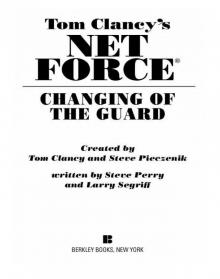 Changing of the Guard
Changing of the Guard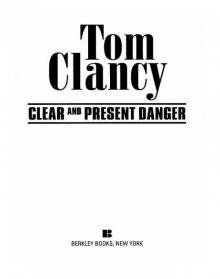 Clear and Present Danger
Clear and Present Danger Hounds of Rome
Hounds of Rome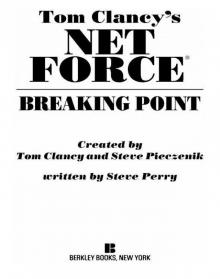 Breaking Point
Breaking Point Tom Clancy's Jack Ryan Books 7-12
Tom Clancy's Jack Ryan Books 7-12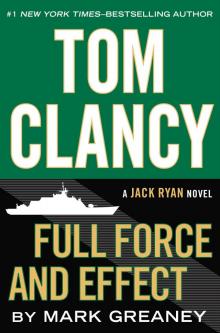 Full Force and Effect
Full Force and Effect The Archimedes Effect
The Archimedes Effect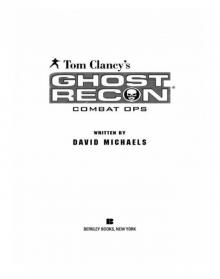 Combat Ops
Combat Ops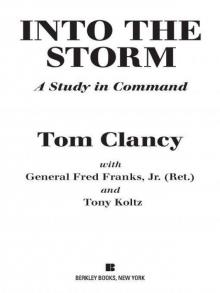 Into the Storm: On the Ground in Iraq
Into the Storm: On the Ground in Iraq Under Fire
Under Fire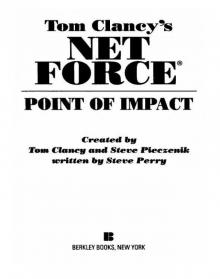 Point of Impact
Point of Impact Red Rabbit
Red Rabbit Rainbow Six
Rainbow Six The Hunt for Red October
The Hunt for Red October The Teeth of the Tiger
The Teeth of the Tiger Conviction (2009)
Conviction (2009)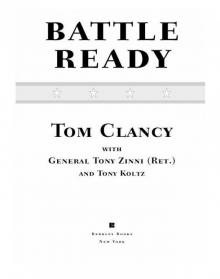 Battle Ready
Battle Ready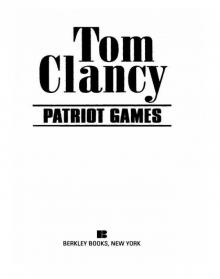 Patriot Games
Patriot Games The Sum of All Fears
The Sum of All Fears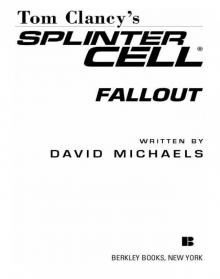 Fallout (2007)
Fallout (2007) Red Storm Rising
Red Storm Rising The Cardinal of the Kremlin
The Cardinal of the Kremlin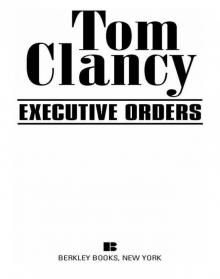 Executive Orders
Executive Orders Lincoln, the unknown
Lincoln, the unknown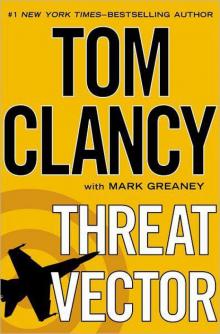 Threat Vector
Threat Vector The Hunted
The Hunted Shadow Warriors: Inside the Special Forces
Shadow Warriors: Inside the Special Forces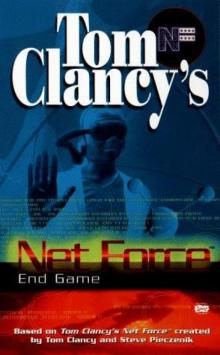 End Game
End Game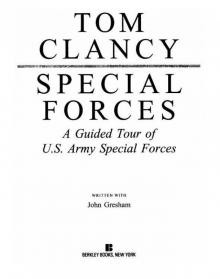 Special Forces: A Guided Tour of U.S. Army Special Forces
Special Forces: A Guided Tour of U.S. Army Special Forces Locked On
Locked On Line of Sight
Line of Sight Tom Clancy Enemy Contact - Mike Maden
Tom Clancy Enemy Contact - Mike Maden Fighter Wing: A Guided Tour of an Air Force Combat Wing
Fighter Wing: A Guided Tour of an Air Force Combat Wing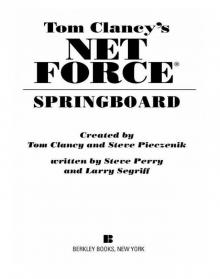 Springboard
Springboard Line of Sight - Mike Maden
Line of Sight - Mike Maden EndWar
EndWar Dead or Alive
Dead or Alive Tom Clancy Support and Defend
Tom Clancy Support and Defend Checkmate
Checkmate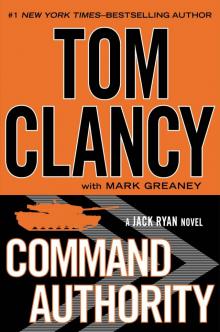 Command Authority
Command Authority Carrier: A Guided Tour of an Aircraft Carrier
Carrier: A Guided Tour of an Aircraft Carrier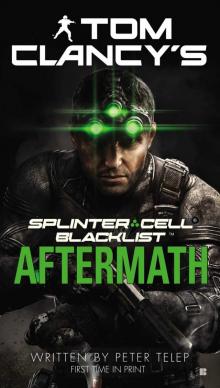 Blacklist Aftermath
Blacklist Aftermath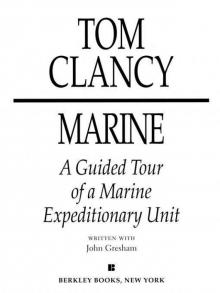 Marine: A Guided Tour of a Marine Expeditionary Unit
Marine: A Guided Tour of a Marine Expeditionary Unit Commander-In-Chief
Commander-In-Chief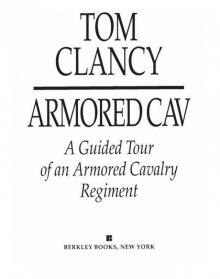 Armored Cav: A Guided Tour of an Armored Cavalry Regiment
Armored Cav: A Guided Tour of an Armored Cavalry Regiment Tom Clancy's Jack Ryan Books 1-6
Tom Clancy's Jack Ryan Books 1-6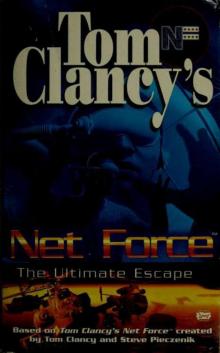 The Ultimate Escape
The Ultimate Escape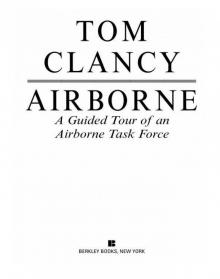 Airborne: A Guided Tour of an Airborne Task Force
Airborne: A Guided Tour of an Airborne Task Force Debt of Honor
Debt of Honor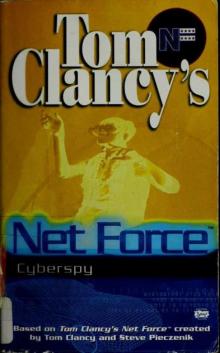 Cyberspy
Cyberspy Point of Contact
Point of Contact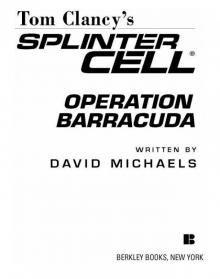 Operation Barracuda (2005)
Operation Barracuda (2005)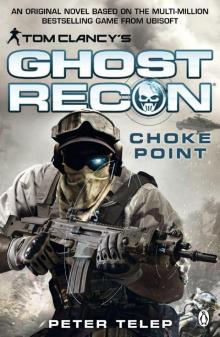 Choke Point
Choke Point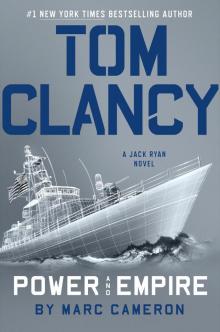 Power and Empire
Power and Empire Every Man a Tiger: The Gulf War Air Campaign
Every Man a Tiger: The Gulf War Air Campaign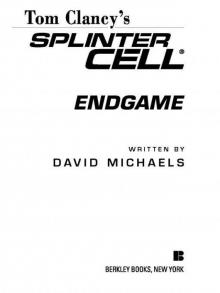 Endgame (1998)
Endgame (1998)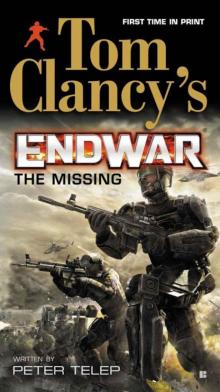 EndWar: The Missing
EndWar: The Missing Splinter Cell (2004)
Splinter Cell (2004) The Great Race
The Great Race True Faith and Allegiance
True Faith and Allegiance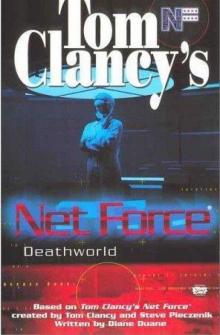 Deathworld
Deathworld Ghost Recon (2008)
Ghost Recon (2008)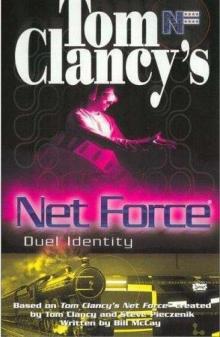 Duel Identity
Duel Identity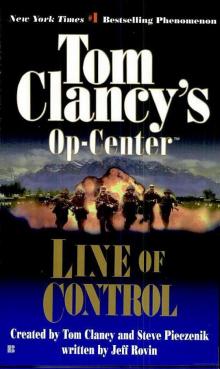 Line of Control o-8
Line of Control o-8 The Hunt for Red October jr-3
The Hunt for Red October jr-3 Hidden Agendas nf-2
Hidden Agendas nf-2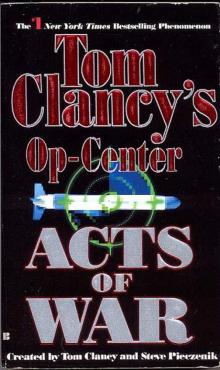 Acts of War oc-4
Acts of War oc-4 Ruthless.Com pp-2
Ruthless.Com pp-2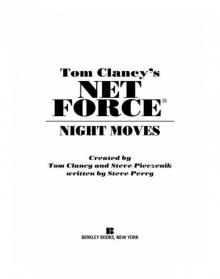 Night Moves
Night Moves The Hounds of Rome - Mystery of a Fugitive Priest
The Hounds of Rome - Mystery of a Fugitive Priest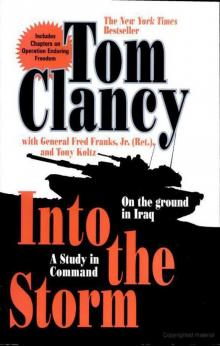 Into the Storm: On the Ground in Iraq sic-1
Into the Storm: On the Ground in Iraq sic-1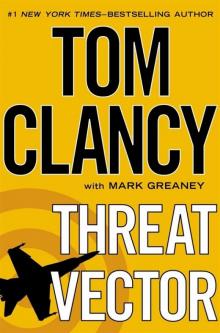 Threat Vector jrj-4
Threat Vector jrj-4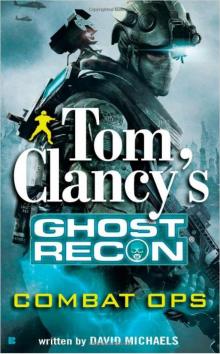 Combat Ops gr-2
Combat Ops gr-2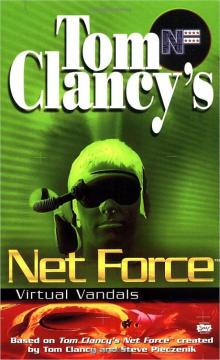 Virtual Vandals nfe-1
Virtual Vandals nfe-1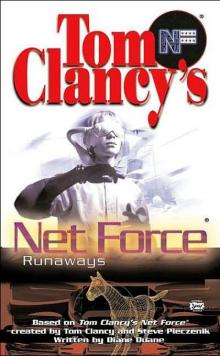 Runaways nfe-16
Runaways nfe-16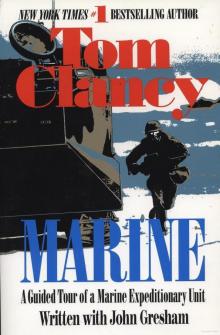 Marine: A Guided Tour of a Marine Expeditionary Unit tcml-4
Marine: A Guided Tour of a Marine Expeditionary Unit tcml-4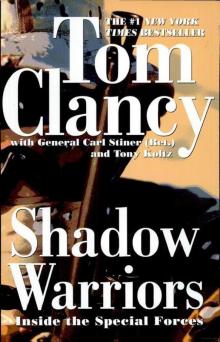 Shadow Warriors: Inside the Special Forces sic-3
Shadow Warriors: Inside the Special Forces sic-3 Jack Ryan Books 1-6
Jack Ryan Books 1-6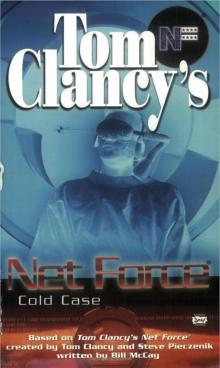 Cold Case nfe-15
Cold Case nfe-15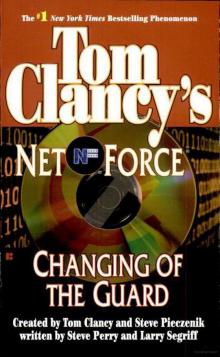 Changing of the Guard nf-8
Changing of the Guard nf-8 Splinter Cell sc-1
Splinter Cell sc-1 Battle Ready sic-4
Battle Ready sic-4 The Bear and the Dragon jrao-11
The Bear and the Dragon jrao-11 Fighter Wing: A Guided Tour of an Air Force Combat Wing tcml-3
Fighter Wing: A Guided Tour of an Air Force Combat Wing tcml-3 Patriot Games jr-1
Patriot Games jr-1 Jack Ryan Books 7-12
Jack Ryan Books 7-12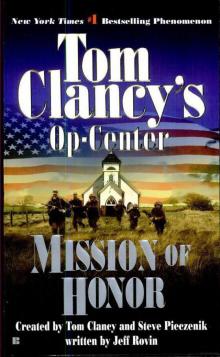 Mission of Honor o-9
Mission of Honor o-9 Private Lives nfe-9
Private Lives nfe-9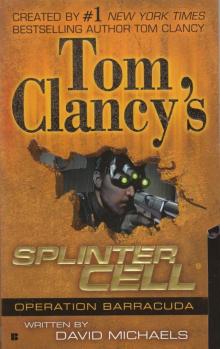 Operation Barracuda sc-2
Operation Barracuda sc-2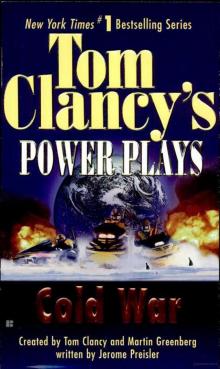 Cold War pp-5
Cold War pp-5 Point of Impact nf-5
Point of Impact nf-5 Red Rabbit jr-9
Red Rabbit jr-9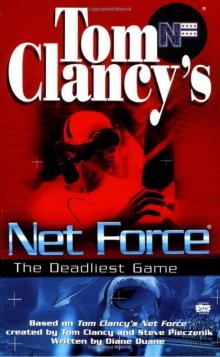 The Deadliest Game nfe-2
The Deadliest Game nfe-2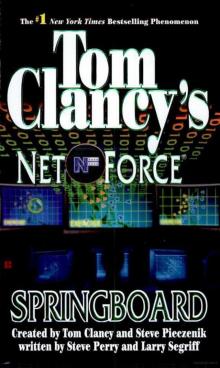 Springboard nf-9
Springboard nf-9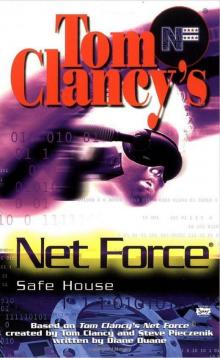 Safe House nfe-10
Safe House nfe-10 EndWar e-1
EndWar e-1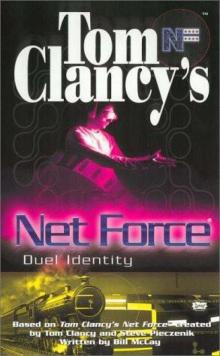 Duel Identity nfe-12
Duel Identity nfe-12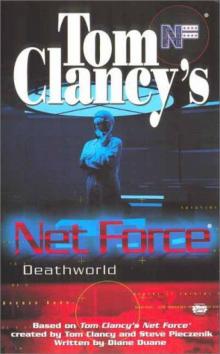 Deathworld nfe-13
Deathworld nfe-13 Politika pp-1
Politika pp-1 Rainbow Six jr-9
Rainbow Six jr-9 Tom Clancy's Power Plays 1 - 4
Tom Clancy's Power Plays 1 - 4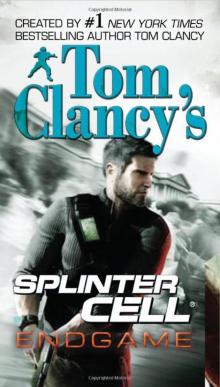 Endgame sc-6
Endgame sc-6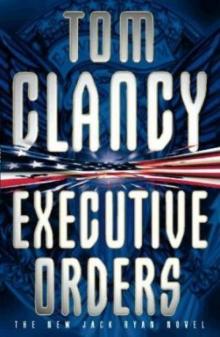 Executive Orders jr-7
Executive Orders jr-7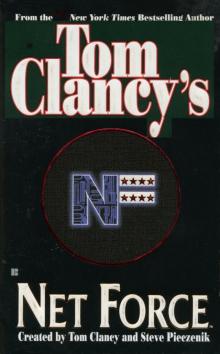 Net Force nf-1
Net Force nf-1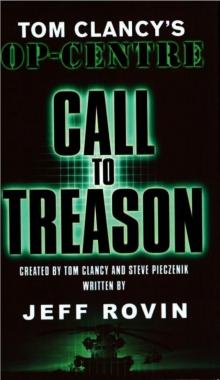 Call to Treason o-11
Call to Treason o-11 Locked On jrj-3
Locked On jrj-3 Against All Enemies
Against All Enemies The Sum of All Fears jr-7
The Sum of All Fears jr-7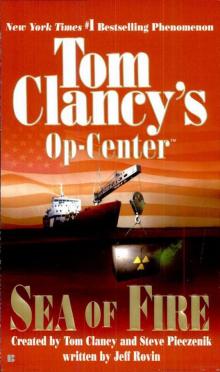 Sea of Fire o-10
Sea of Fire o-10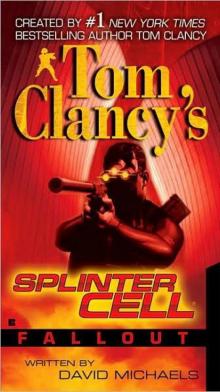 Fallout sc-4
Fallout sc-4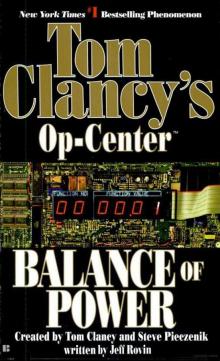 Balance of Power o-5
Balance of Power o-5 Shadow Watch pp-3
Shadow Watch pp-3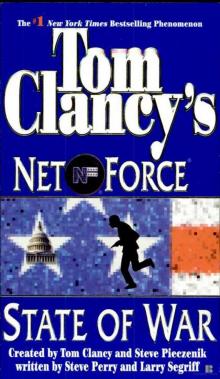 State of War nf-7
State of War nf-7 Wild Card pp-8
Wild Card pp-8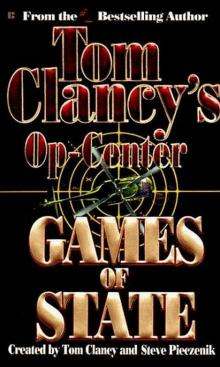 Games of State o-3
Games of State o-3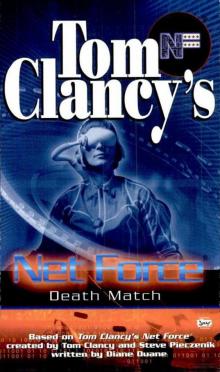 Death Match nfe-18
Death Match nfe-18 Against All Enemies mm-1
Against All Enemies mm-1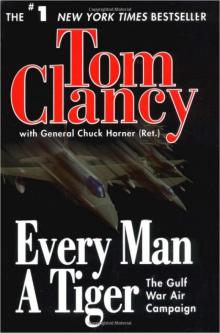 Every Man a Tiger: The Gulf War Air Campaign sic-2
Every Man a Tiger: The Gulf War Air Campaign sic-2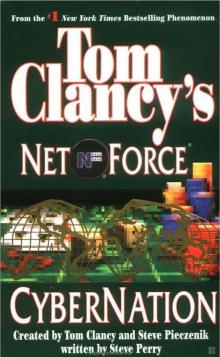 Cybernation nf-6
Cybernation nf-6 Support and Defend
Support and Defend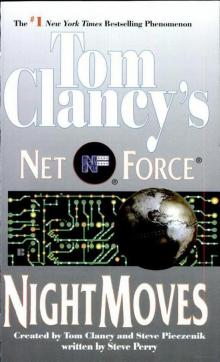 Night Moves nf-3
Night Moves nf-3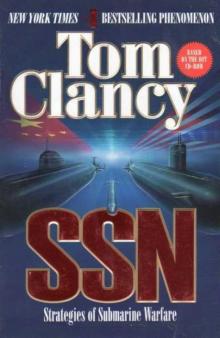 SSN
SSN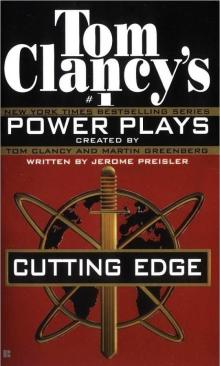 Cutting Edge pp-6
Cutting Edge pp-6 The Cardinal of the Kremlin jrao-5
The Cardinal of the Kremlin jrao-5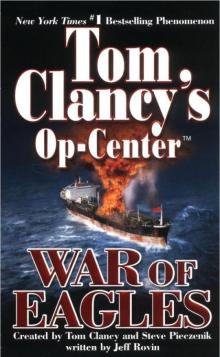 War of Eagles o-12
War of Eagles o-12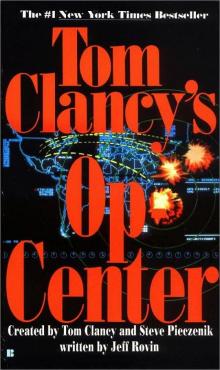 Op-Center o-1
Op-Center o-1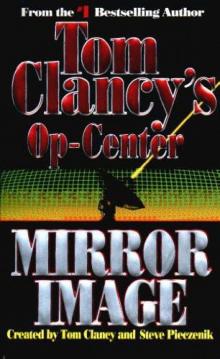 Mirror Image o-2
Mirror Image o-2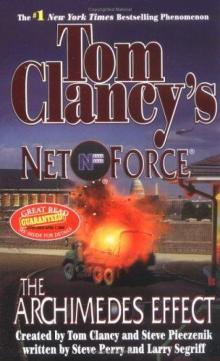 The Archimedes Effect nf-10
The Archimedes Effect nf-10 Teeth of the Tiger jrj-1
Teeth of the Tiger jrj-1 Bio-Strike pp-4
Bio-Strike pp-4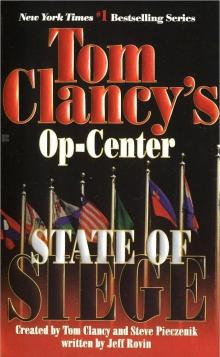 State of Siege o-6
State of Siege o-6 Debt of Honor jr-6
Debt of Honor jr-6 Zero Hour pp-7
Zero Hour pp-7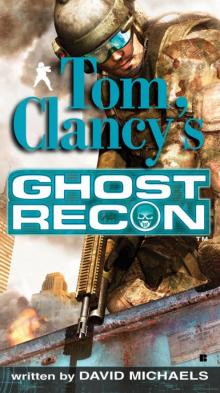 Ghost Recon gr-1
Ghost Recon gr-1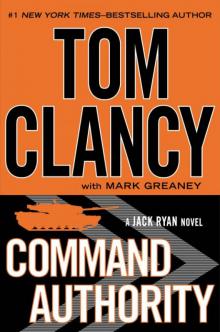 Command Authority jr-10
Command Authority jr-10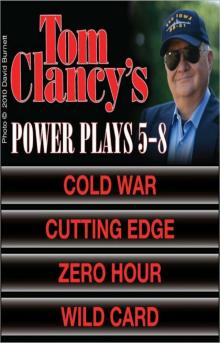 Tom Clancy's Power Plays 5 - 8
Tom Clancy's Power Plays 5 - 8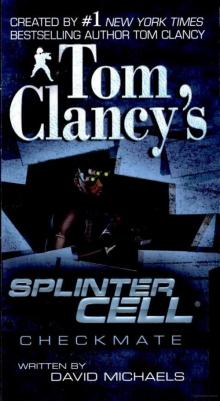 Checkmate sc-3
Checkmate sc-3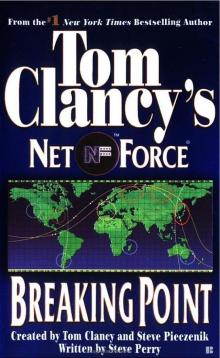 Breaking Point nf-4
Breaking Point nf-4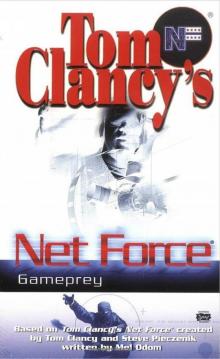 Gameprey nfe-11
Gameprey nfe-11 The Hunted e-2
The Hunted e-2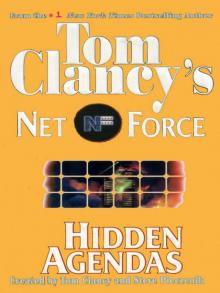 Hidden Agendas
Hidden Agendas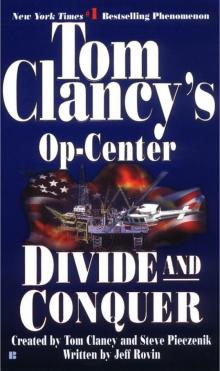 Divide and Conquer o-7
Divide and Conquer o-7